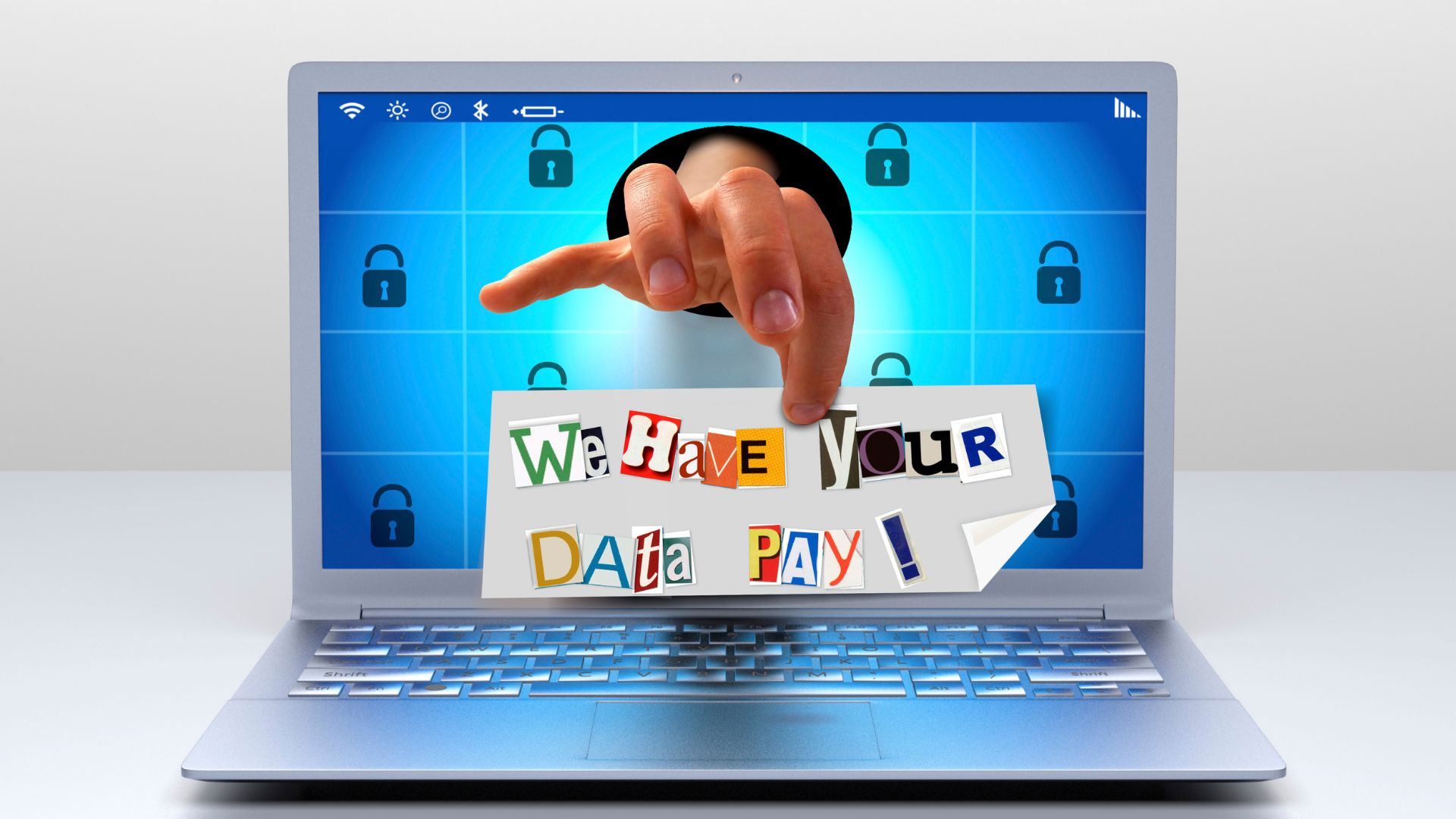
All companies face an increasing threat from ransomware. In recent years, ransomware has emerged as one of the most prevalent varieties of cyberattacks. The power of a ransomware attack can halt your company’s operations, compromise sensitive data, and inflict financial and reputational harm. Awareness and proactive measures are crucial to safeguarding your business. In this article, we’ll explain what ransomware is, how it works, and what you can do to protect your business today.
What is Ransomware?
Ransomware is a type of malicious software (malware) that encrypts data on a recipient’s computer, making it inaccessible. The attacker then demands a ransom, often in cryptocurrency, in exchange for the decryption key. Additionally, attackers may threaten to publish or sell sensitive data if the ransom isn’t paid.
The goal of ransomware is financial gain, and its impact on victims can be devastating. For businesses, the consequences extend beyond the ransom itself to include downtime, loss of customer confidence, and potential legal and compliance issues.
How Does Ransomware Work?
Ransomware typically infiltrates systems through phishing emails, malicious attachments, or exploiting software vulnerabilities. Once inside, the malware encrypts files on the infected computer or network, rendering them unreadable without the decryption key.
Common Types of Ransomware
- Crypto Ransomware: Encrypts files and demands payment for the decryption key.
- Locker Ransomware: Locks users out of their systems, including all files and applications.
- Double Extortion Ransomware: Encrypts data and threatens to make it public if the ransom isn’t paid.
After infection, attackers display a ransom note demanding payment. Failure to pay often results in permanent data loss.
The Rise of Ransomware Threats
Ransomware attacks have surged in recent years. During the COVID-19 pandemic, businesses unprepared for remote work became especially vulnerable. The FBI’s Internet Crime Complaint Center (IC3) reported a significant increase in ransomware complaints, highlighting its widespread impact.
High-profile attacks on large corporations, hospitals, and government agencies underscore the severe consequences of ransomware. Even small businesses face downtime, lost revenue, and costly recovery efforts.
How to Safeguard Your Company From Ransomware
1. Install Strong Data Backup Solutions
- Regularly back up critical data, such as files, databases, and system configurations.
- Ensure backups are stored offline or in secure cloud environments.
- Test backup systems regularly to ensure data integrity.
2. Keep Software and Systems Updated
- Install the latest security updates for operating systems and applications.
- Enable automatic updates where possible.
- Use vulnerability management tools to identify and patch outdated software.
3. Educate Employees on Cybersecurity Best Practices
- Conduct regular cybersecurity training for employees.
- Simulate phishing attacks to test awareness.
- Promote the use of strong, unique passwords and discourage reuse across accounts.
4. Implement Multi-Factor Authentication (MFA)
- Require MFA for accessing sensitive systems like email, cloud platforms, and financial applications.
- Use MFA for remote access to your business network.
5. Segment Your Network
- Divide your network into smaller, isolated segments to limit ransomware spread.
- Implement firewalls and access controls.
- Monitor network traffic for suspicious activity.
6. Install Antivirus and Anti-Malware Software
- Use updated antivirus and anti-malware software to detect and prevent ransomware.
- Regularly scan all systems, including employee devices, for potential threats.
- Consider advanced tools like endpoint detection and response (EDR).
7. Have a Robust Incident Response Plan
- Develop a ransomware-specific incident response plan.
- Educate employees on reporting suspicious activity promptly.
- Work with cybersecurity professionals to minimize downtime and data loss.
8. Avoid Paying the Ransom
- Paying the ransom does not guarantee data restoration and encourages criminal activity.
- Notify law enforcement agencies, like the FBI, about the attack.
- Use backups or decryption tools from trusted sources to recover data.
Conclusion
In an era where cyberattacks like ransomware continue to evolve, protecting your business isn’t just an option—it’s a necessity. By understanding the threats, implementing robust security measures, and fostering a culture of cybersecurity awareness, you can significantly reduce your organization’s vulnerability.
Remember, prevention is always more cost-effective than recovery. Regularly updating systems, maintaining backups, training employees, and adopting a proactive cybersecurity strategy are your strongest defenses. In the unfortunate event of an attack, having an incident response plan can make all the difference in minimizing damage and ensuring swift recovery.
Cybersecurity is an ongoing journey, not a one-time solution. Stay informed, stay prepared, and keep your business safe from ransomware threats.
Recent Posts
- Understanding Network Management: What It Is and Why It Matters for Your Business
- Stay One Step Ahead: Protecting Your Business with Endpoint Security & Disaster Recovery
- Simplifying IT Management: From Employee Onboarding to Cloud Solutions
- Maximizing Operational Efficiency with IT Infrastructure Management
- Managed IT Services: The Key to Unlocking Efficiency and Security for Your Business
Recent Comments
- No comments to show
